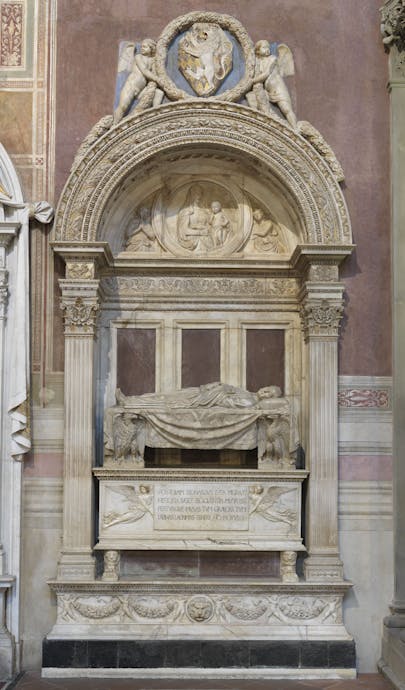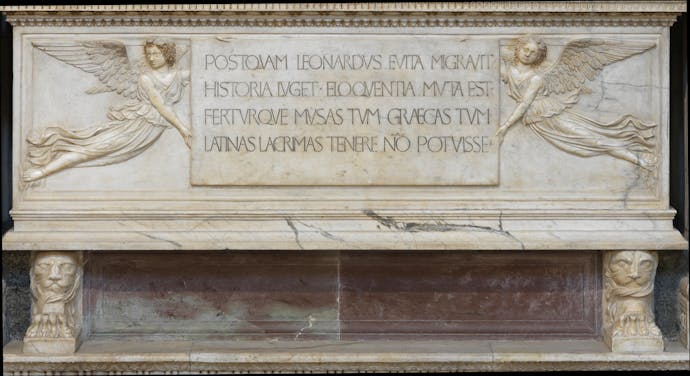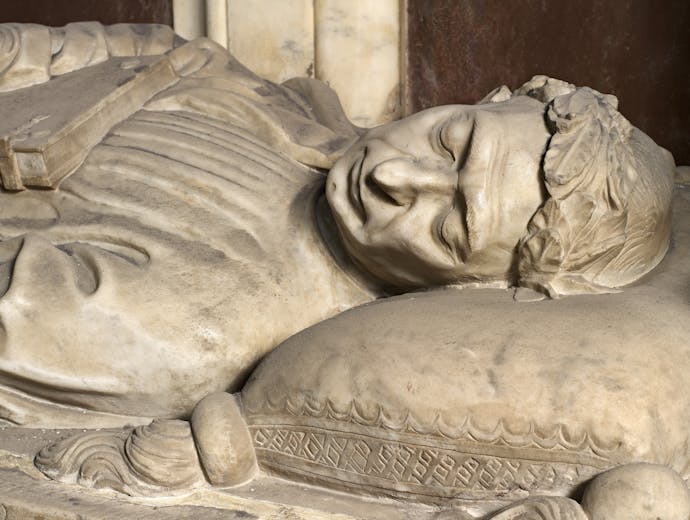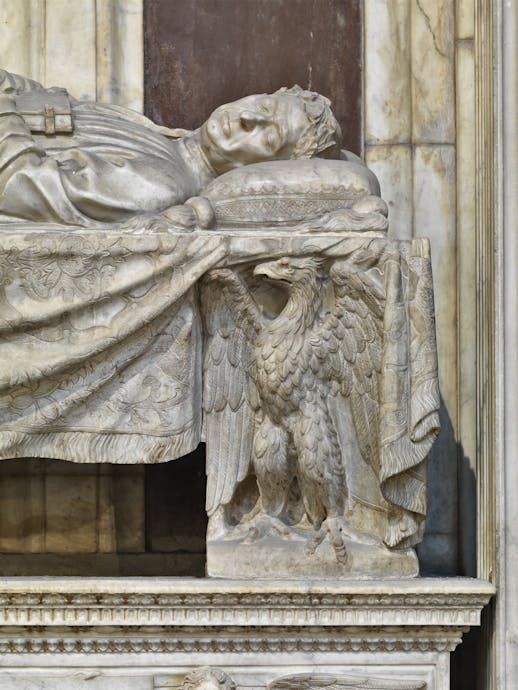Bernardo Rossellino
Artist: Bernardo Rossellino (Bernardo di Matteo Gamberelli; Settignano 1409 - Florence 1464)
Title: Monumental Tomb of Leonardo Bruni (1370-1444)
Date: c. 1445-1450
Material: marble
Misure: 715 x 316, 2 cm
Collocazione: Basilica of Santa Croce, south aisle, sixth bay
The tombs of Leonardo Bruni and Carlo Marusppini, which face each other across the nave, mark Santa Croce's transition from last resting place for the neighbourhood's leading families to guardian of Florence's public glories, because presumably it was the Signoria that commissioned and paid for the erection of the imposing tombs of humanist and historian Leonardo Bruni, a former Chancellor of the Florentine Republic, and of his successor Carlo Marsuppini.
With this once gilded polychrome tomb, Bernardo Rossellino created the prototype of the Florentine Renaissance funerary monument in terms of composition and design, of classicising decorative elements and, not least, of the skilled insertion of commemorative inscriptions on sarcophagi. Linearity and clarity characterise the architecture, dispensing with the allegorical figures and drapery typical of the medieval tomb.
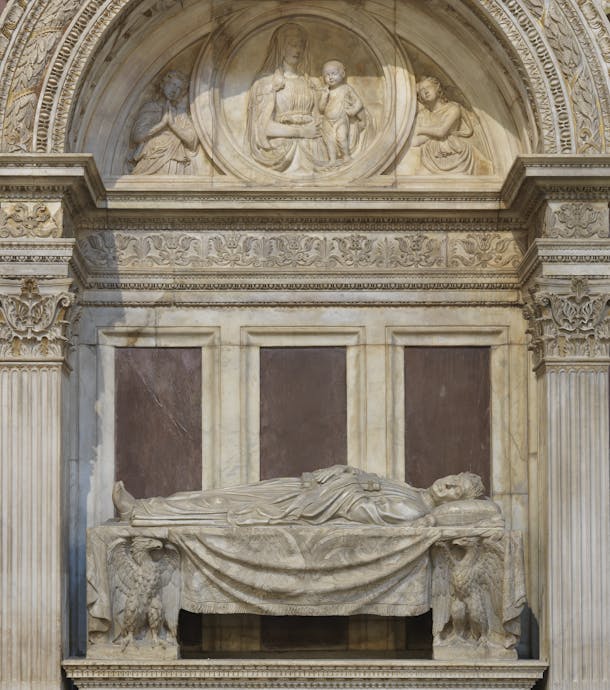
Bernardo Rossellino, Monumental Tomb of Leonardo Bruni, detail, c. 1445–50. Basilica of Santa Croce, south aisle
The monument consists of an arched ædicula supported by pilasters on each side – echoing both the arcosolium tomb and the Roman triumphal arch – containing a sarcophagus surmounted by a funerary bier with the realistic gisant of the deceased lying on the bier, clutching a copy of his Historia Fiorentina. The pilasters support the trabeation from which there springs a rounded arch enclosing a relief of the Madonna and Child with Two Angels and crowned by the family crest held by two winged putti.
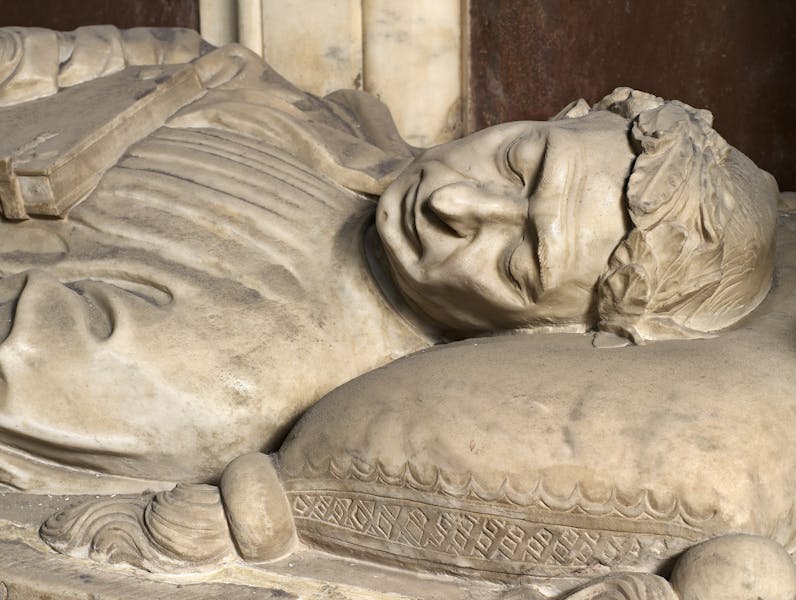
Bernardo Rossellino, Funerary portrait of Leonardo Bruni, detail of the Monumental Tomb of Leonardo Bruni, c. 1445–50. Basilica of Santa Croce, south aisle
The extremely refined decoration of the architectural parts is inspired by the classical orders, but the overall composition also echoes the style of Brunelleschi and Alberti.
On the sarcophagus, two winged victories hold a humanistic inscription in Roman lettering forming the focus of the deceased scholar's secular glorification: “POSTQUAM LEONARDUS E VITA MIGRAVIT / HISTORIA LUGET, ELOQUENTIA MUTA EST / FERTURQUE MUSAS TUM GRAECAS TUM / LATINAS LACRIMAS TENERE NON POTUISSE” (Since Leonardo has left this life, History weeps, Eloquence is struck dumb, and it is said that neither the Greek nor the Latin muses can hold back their tears).
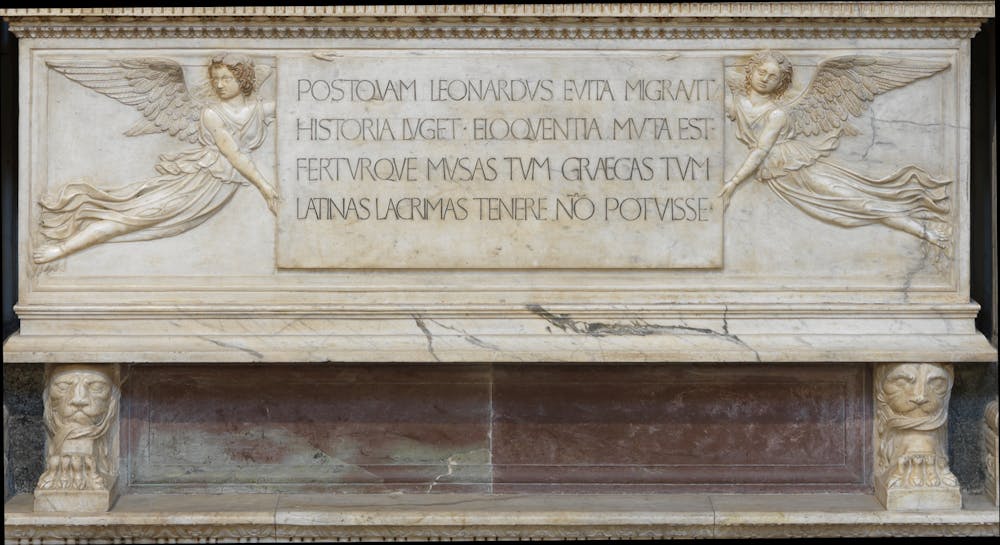
Bernardo Rossellino, Inscription on panel held by two angels, detail of the Monumental Tomb of Leonardo Bruni, c. 1445–50. Basilica of Santa Croce, south aisle
